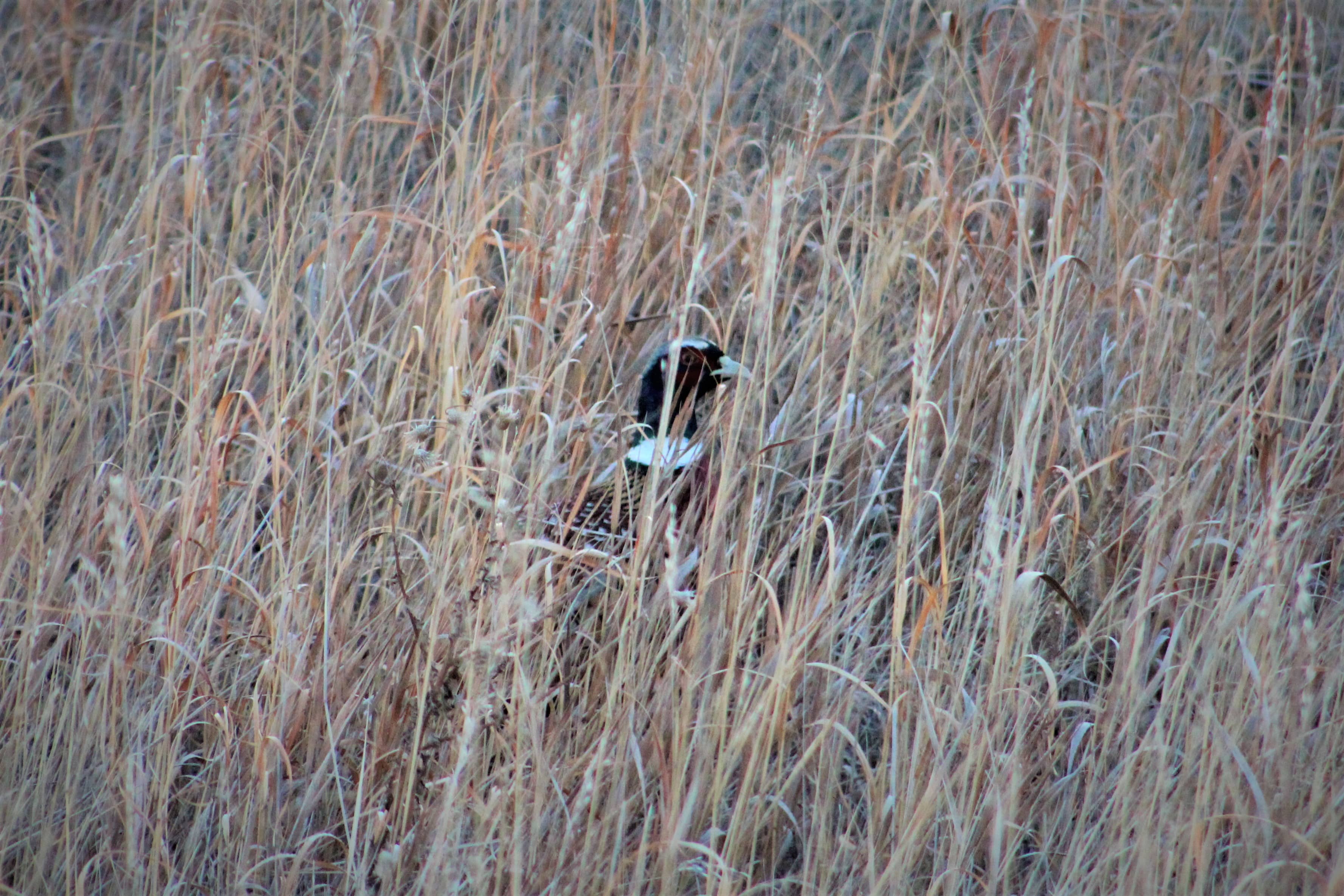
Now You See Me. Stands of grass on idled land enrolled in CRP or other conservation programs give pheasants cover from predators, limit the impact of hot summers and harsh winters and provide benefits to society. Simonson Photo.
By Nick Simonson
In college, at the local grocery store was one of those old-timey scales from the 1930s or 40s with a large dial at the top displaying weights from 0 to 300 pounds.
Each time I’d step on it, I’d watch the needle zip up to the high 200s, then back down to 100, then up to 220, then back down to 180, before settling in the mid-190s where I was most of the time. It provided a fun sort of gasp-and-sigh moment before displaying my real weight and was certainly more of a process than the immediate digital readout on the bathroom floor model which I now use each morning. It was always a fun joke when shopping with my buddies for one of us to step on the scale while the other guy wasn’t looking, and then encourage more trips to the gym and less late-night pizza, when the needle went up and stayed put.
Like that grocery store scale, the natural world is a balancing act, constantly wobbling back and forth until it finds its stillness in a moment, before shifting once again with a change in weather pattern. What we lack one season we may get in abundance the next. Dry conditions one year may yield to a soaking the following spring and summer, highlighted by a hatch of a certain butterfly benefitting from those precise conditions. Absence of snow for a few seasons may give way to a harsh winter a few years down the road, limiting wildlife survival and hunting success. As the conditions change, what we find in our favorite waters and huntable lands changes with them.
From year-to-year the opportunities change, even in those places where they aren’t assisted by man. High waters in one spring may bring good spawning for pike and perch that a few years down the road provide fast ice fishing. Mild winters with a shot of snow and timely spring rains provide ideal hatching conditions for pheasants, making for a great autumn ahead.
In those places where we do sneak a toe on the scale – the stocking of trout in a stream, or the dumping of walleyes into a lake where neither would normally reproduce or generally exist – the shift is less obvious and we know what we’re going to get. In the field, however, the only element of control is habitat.
In recent years, we’ve seen a greater back-and-forth of habitat on the landscape, with a current notable trough exposing the growing whipsaw of wildlife populations now dictated by the weather. The Conservation Reserve Program (CRP) was at its most recent height in 2007, with 1.8 million acres of idled land in Minnesota, 1.5 million in South Dakota and an incredible total of nearly 3.4 million acres in in North Dakota. Now, those tallies are just over 1 million acres in each state.
As habitat goes, so do our wildlife populations. The graph for hunter harvests, offered deer tags, and population surveys conducted by wildlife agencies shows a comparable drop when plotted against idle acres on the landscape. Now when winters get hard, they’re made harder for wildlife without places to go. When droughts dry things up, only the deepest, most established habitat holds on to provide moisture, vital parts of the food web and nesting cover for hatching upland game and waterfowl.
But the benefits of habitat go beyond the autumn adventures pursued by just a portion of the population. From sequestered soil and the carbon contained in it, to the prevention of flooding and the filtration of water, habitat has a way of making things better for humankind as well. The preservation of expansive sloughs and lowland areas and even those smaller ones helps make things more predictable downstream where cities brace for the spring melt each season and tap those flows for their drinking water. The impact is larger and measures much more, and there’s far less yaw and much more certainty when there is grass on the landscape and cattails in those deeper draws. Wherever it can be added, as a foot on the proverbial platform, habitat benefits all species from those on four legs, to those with wings, to those with two legs that chase after them all.
This fact makes the element of habitat on the landscape all the more important to continued outdoor opportunities and successful outings, along with more regular flowing and cleaner waters…in our outdoors.
